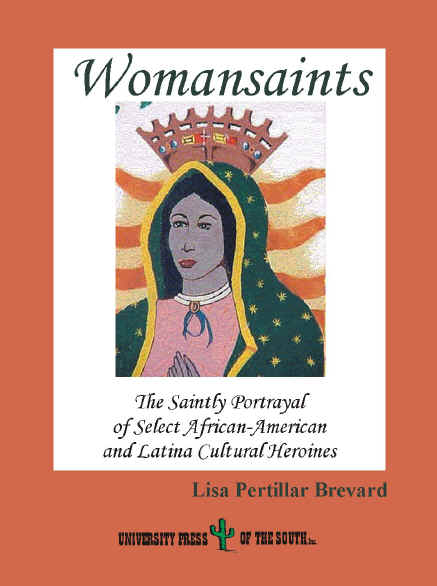Rooted in women’s voices in and through literature,
music, the visual arts and politics, Womansaints: The Saintly Portrayal of Select
African-American and Latina Cultural Heroines is offered to open dialog across
cultural boundaries, toward a greater understanding of the commonalities of
African-American and Latina womanhood.
Womansaints
attempts to historicize and draw parallels between stereotypes of African-American and
Latina women utilizing the Catholic Latina saint-to-whore stereotype continuum as a model.
In this study the womansaint is defined as a woman
who derives her power from purity (undiluted strength), perceived commitment to the
pueblo
(common people), (nearly) silent suffering, and having not born children.
The Catholic
Latino communities lend themselves naturally to presenting a ready-made role model for and
stereotype of Latina women in the Madonna and Child and Virgin Mary iconography, due to
the nature of their religion. In contrast,
most African-Americans are Protestant, and their religious iconography targets the
Crucifixion and the Resurrection of Christ.
The
author, however, is able to distinguish four overlapping embodiments of the womansaint
stereotype: the Angel; the Virgin Mary; the Madonna and Child; and the Martyr.
